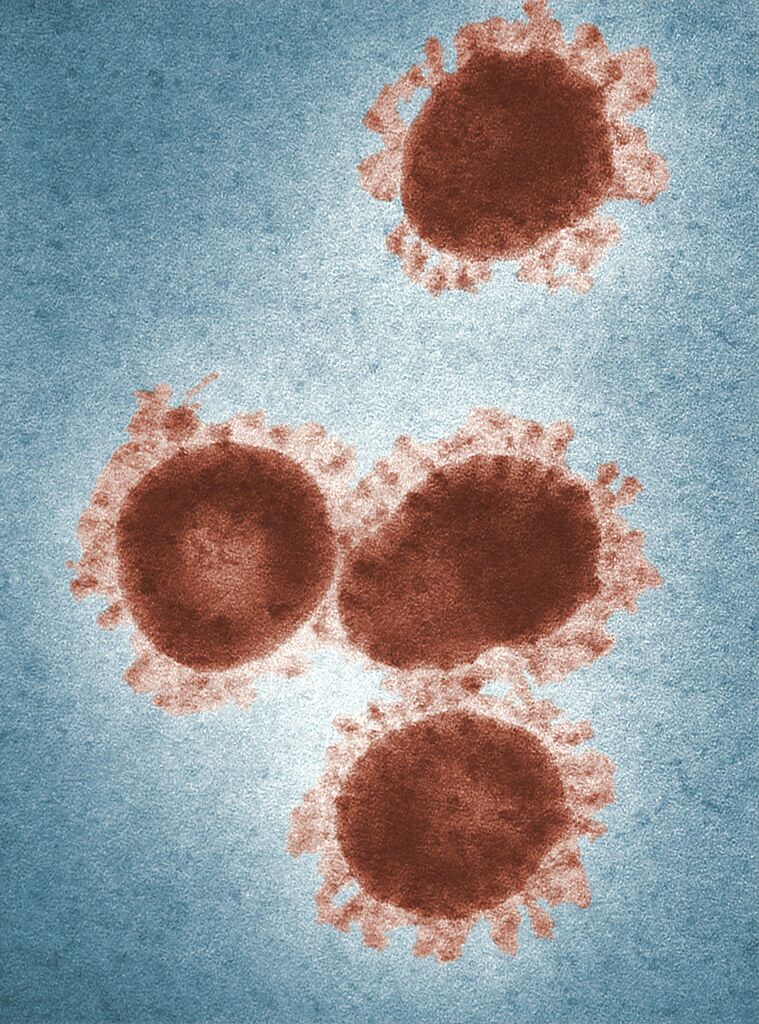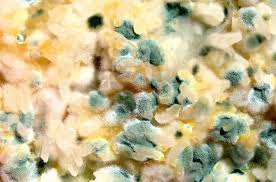Viruses: What is a Virus?

What is a virus?
Welcome to our virus series of blog articles. In this first part of the series, we introduce viruses: how they function, how they cause disease, how they can benefit us, and an introduction to testing. For an abbreviated version of this article with a video,CLICK HERE. In subsequent articles, we will review immune function and competence, strategies for prevention and treatment of viral infections, and specific viruses along with their effects and treatment. The information in these articles will help you understand viruses, how they can or do impact you, and how to prevent and manage them.
What is a virus?
It is possible viruses have existed since before the initial living cells evolved and that viruses gave rise to the first primordial life forms, though there are multiple theories regarding viral genesis. Which one is correct remains a mystery as viruses don’t leave fossil records for virologists to trace or date.
The word ‘virus’ has roots in the Latin word for poison as, initially, it was thought that viruses were a kind of poison that had not been identified. It was subsequently hypothesized that they were very small bacteria, and finally discovered that they were a unique infectious agent in the late 19th century.
A virus is a particle comprised of a capsid, or protein shell, of various shapes and sizes with either a DNA or RNA genome inside. They enter cells and use intracellular machinery to reproduce. Whether they are alive or not is a matter of continued debate – they hover on the cusp of the animate and inanimate, of chemistry and biology. They do not have cells, organelles, or other mechanisms of life, so many do not consider them living organisms. They do have the capacity to reproduce, though, which is a quality of life. Some hypothesize that a virus is both living and non-living: living when it enters a cell and begins to reproduce and non-living when it is outside a cell – a kind of zombie that awakens in the cocoon of our cell when given access to necessary mechanisms of life.
How do viruses cause disease?
Although we generally think of viruses as pathological, there are millions of types of viruses on Earth and are an estimated 320,000 (Anthony SJ, 2013) different viruses that can infect mammals, out of which only 219 (Woolhouse M, 2012) are currently known to infect humans.
A virus can only survive when incorporated into a host organism. They do not have the biological machinery needed to survive and replicate, so rely on their host’s cellular mechanisms for survival and reproduction.
Once a virus reproduces inside a cell, the new virions (individual viral particles) break out of the cell to move into the bloodstream and infect new cells. Breaking out of the cell causes lysis (cell death), which is one of the primary mechanisms through which viruses cause disease – when enough cells die, a disease process can manifest.
Another way viruses cause disease (as we have heard so frequently during the COVID-19 pandemic) is through an overly aggressive response of the immune system, which can either cause a cytokine (immune system messengers) storm that results in highly excessive systemic inflammation and potentially fatal damage to multiple organs or through a more specific targeting of an organ due to similarity between the organ’s cells and the virus. An example of more specified immune response is viral myocarditis (heart muscle damage and inflammation) due to an enteroviral infection – the cardiomyocytes (heart cells) look enough like the enterovirus that the immune system attacks both the virus and the heart.
Fortunately, most of us, most of the time, have a balanced immune response that either clears or suppresses the virus appropriately, like with a common cold that visits for a while and disappears.
Many viral infections are never actually eliminated from the body and live in a dormant state inside our cells, suppressed by the immune system. Examples of this include herpes simplex 1 virus, which can manifest as cold sores (Mayo Clinic Staff) when the immune system is weakened. Part 2 of this series will focus on the immune system, how it interacts with and defends us from viruses, and what we can do to support a balanced immune response.
To Read About Blog Topic, Scroll Down
Want To Work With Our Clinic?
Do you have a chronic or mystery illness that no one has been able to help you with? Are you simply wanting to re-connect with a healthier version of yourself? It’s Time To Finally Feel Better!
How do viruses benefit human health?
Humans have co-evolved with viruses over millions of years and viral DNA, particularly endogenous retroviral (ERV) DNA, makes up a significant portion of human DNA (Grandi N, 2018) (more on potentially detrimental effects of this in a future article!). Not only do most viruses not cause significant disease but can also be beneficial through evolutionarily adaptive DNA integration, immune system entrainment, and by existing as an essential component of our microbiome (called the virome).
Examples of beneficial effects of human/viral integration include the ability of the placenta to connect to the uterus and the existence of amylase (which digests starch) in saliva (NIH, 2016). Increased capacity for digesting starch likely gave humans an evolutionary advantage as they could incorporate more varied foods into their diet.
Integration of specific retroviral DNA into human DNA has also been demonstrated to increase immune function. It is possible that the genomes of humans (or our ancient ancestors) repurposed viral DNA for their own defense, using it to spur the immune system into action against viruses and other foreign invaders. By using the gene editing technique, CRISPER, scientists eliminated individual ERV sequences in human cells and observed a notable weakening of immune function when the cells were challenged by viral infection (NIH, 2016).
The human virome is the sum-total of all viruses on and in our body. There are an estimated ten times more bacterial cells than human cells constituting a human body and likely many times more virions than bacterial cells comprising our microbiome.
Testing your gut microbiome is an important step in the journey to optimal health as it has an impact on many aspects of our physiology, from our immune system to psychological wellness. Talk to one of our doctor’s about taking this vital step on your path to wellness.
The primary type of virus in our gut microbiome are called bacteriophages, which are viruses that infect bacteria. The interaction of these with bacteria has potentially beneficial effects on balancing our overall microbial diversity as well as therapeutic effects when used as supplements or medications. The advent of antibiotics significantly reduced interested in the therapeutic role of bacteriophages as treatments for bacterial diseases, but the interest is re-emerging as the significant issue of antibiotic resistance grows. Ask one of our practitioners about bacteriophage supplementation and if may be right for you.
Although viruses can and do cause significant morbidity and mortality in humans, they primarily exist with us symbiotically as a part of our internal and external ecosystem and predate our existence as humans.
How do you test for viruses?
There are various ways to test for the presence and history of viral infection in humans, some more accurate than others. Testing falls under two broad categories: directly testing for the presence of the virus or testing the immune system to infer either a current or past infection.
An important concept to note when testing for viral infections is ‘sensitivity and specificity’:
- Sensitivity refers to the proportion of positive test results are truly positive. For example, a sensitivity of 100% means that a test identifies all positive cases correctly. A sensitivity of 95% means that 95% of the positive results were truly positive and 5% showed a positive result but were negative.
- Specificity refers to the proportion of negative test results that are truly negative. For example, a specificity of 95% means that 95% of negative results were truly negative and 5% showed a negative result but were positive.
The accuracy of testing is clearly of crucial importance as treatment decisions are made based on these results. If you are tested for an infection and receive a positive result when you are actually negative, you could receive treatment that is unnecessary or potentially even harmful! The closer the test to 100% sensitivity and 100% specificity, the better. Our practitioners can recommend the most accurate testing based on your needs and circumstances.
Basics of viral testing
Testing directly for the presence of viruses:
- PCR (polymerase chain reaction): directly detects viral DNA and RNA.
Testing the body’s immune response to a virus:
- Antibody testing (IgM, IgG, and IgA): Antibodies are vital components of our immune system and can either directly neutralize viruses or direct other aspects of our immune system to attack the virus. Specific antibodies are unique to specific viruses, so their presence can be used to determine which virus we currently have (IgM) or previously had (IgG).
Testing for the presence of viral components or the immune response/impact:
- ELISA (enzyme-linked immunosorbent assay): This is one of the most common methods of testing for viruses and functions by identifying antigens, which are substances produced by the virus. ELISA can also identify antibodies produced by the body to fight the virus. PCR results are more accurate but tests identifying antigens (such as ELISA) are generally easier, cheaper, and faster to perform.
- Nagalase: an enzyme used to detect the overall viral burden in chronic viral infections. Higher levels of nagalase can indicate a greater viral burden. For more information on nagalase, please see our blog at: https://medicinewithheart.com/blog/nagalase-testing-nagalase-care/
This brief overview of testing for viruses provides some basic insight into what your test results may indicate so you are able to discuss this in greater depth with your healthcare practitioner. At Medicine with Heart, our doctors are extremely knowledgeable and experienced with diagnosis and treatment of chronic and acute viral infections, so we welcome you to set up a complimentary appointment to determine if this is a concern for you.
Thank you for taking the time to read this introduction to viruses. Now that you know more about what viruses are and how they can influence you, keep an eye out for part two of this series, where we will discuss the basics of immunology and how you can keep your immune system healthy in order to prevent and reduce the impact of viral infections and their complications.
Are You Suffering From A Chronic Illness?
Does your current health situation look like this…
- Do you feel that you have tried many things and either nothing works, or the treatment does not hold?
- Have you been told that there is nothing that can be done to reverse your illness and you just need to manage symptoms?
- Does your illness impact your work, your family, your happiness and your social life?
We specialize in finding answers and solutions for complicated chronic illness when people feel like they have tried everything. If this sounds like you, book a free call with us to see if we are the right fit for your health goals.
Dr. Miles has spoken for the following organizations:

















